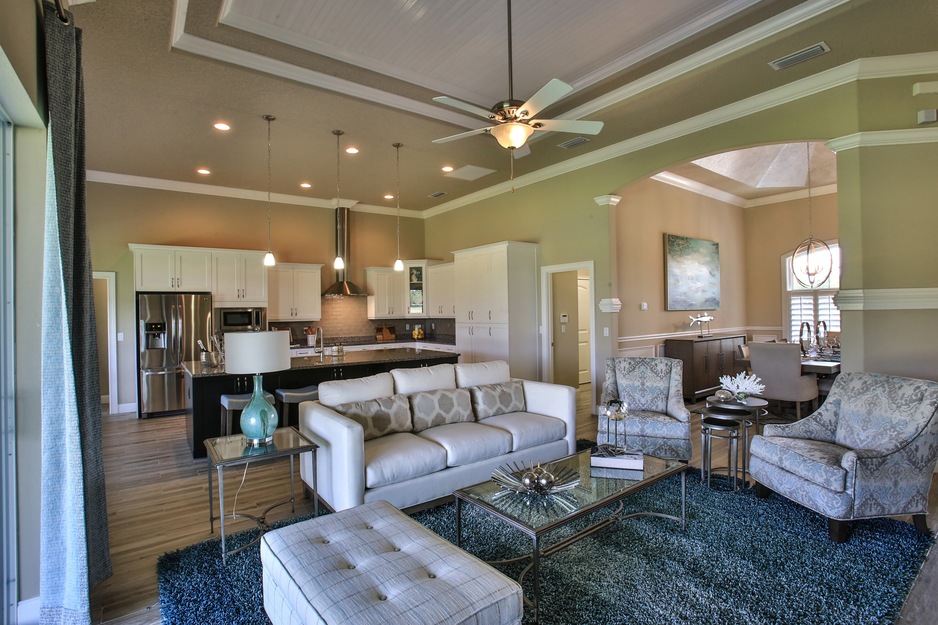Designing a custom home is an exciting opportunity to create a living space that perfectly reflects your unique tastes, preferences, and lifestyle. It allows you to build a home that caters to your specific needs and incorporates features that you’ve always dreamed of having. However, the design process can be overwhelming, as there are many factors to consider and decisions to make. In this article, we will explore essential considerations for designing a custom home, providing valuable insights and guidance to help you create a tailored living space that truly feels like home.
Determine Your Needs and Priorities
Before you begin the design process, it’s crucial to identify your needs and priorities for your custom home. Consider your current living situation and identify any pain points or areas that require improvement. Think about the number of bedrooms and bathrooms you need, the size and layout of common living areas, and any specialized spaces, such as a home office or gym. Create a wishlist of features and prioritize them based on their importance to your lifestyle.
Consider the Site and Location
The location of your custom home will significantly impact its design and layout. When selecting a building site, consider factors such as the size and shape of the lot, the surrounding environment, and the availability of utilities and infrastructure. Take note of any site-specific challenges or restrictions that may influence your home design, such as sloping terrain or building code requirements. Consult with custom home builders who have experience working in your desired location to ensure they are well-equipped to address any potential site-related issues.
Develop a Functional Floor Plan
A well-designed floor plan is the foundation of a functional and comfortable living space. Consider the flow and layout of each room, ensuring that they are easily accessible and serve their intended purpose. Create distinct zones for different activities, such as sleeping, cooking, and relaxation, to improve the overall usability of your home. Think about how your family will grow and change over time, and design your floor plan to accommodate these potential changes.
Focus on Energy Efficiency and Sustainability
Incorporating energy-efficient and sustainable features into your custom home design can significantly reduce your utility bills and minimize your environmental impact. Consider elements such as solar panels, energy-efficient windows, and high-quality insulation to improve your home’s energy performance. Additionally, opt for sustainable building materials, such as reclaimed wood or recycled metal, to further reduce your carbon footprint.
Select the Right Materials and Finishes
The materials and finishes you choose for your custom home will greatly influence its overall aesthetic and durability. Consider the architectural style of your home and select materials that complement and enhance this design. Be mindful of the long-term maintenance requirements and life expectancy of each material, and select options that align with your lifestyle and preferences. Consulting with house painters can provide valuable insights into the best paint options and finishes for your home’s exterior and interior.
Design for Storage and Organization
Adequate storage is essential for maintaining an organized and clutter-free living space. When designing your custom home, prioritize storage solutions that are both functional and visually appealing. Consider incorporating built-in cabinets, walk-in closets, and custom shelving to maximize storage capacity and maintain a cohesive design aesthetic throughout your home.
Plan for Outdoor Living Spaces
Don’t neglect the importance of outdoor living spaces in your custom home design. Thoughtfully designed outdoor areas can serve as an extension of your indoor living space, providing additional room for relaxation, entertainment, and recreation. Consider elements such as decks, patios, and landscaped gardens when designing your custom home to create a harmonious indoor-outdoor connection.
Collaborate with Professionals
Working with experienced professionals, such as architects, custom home builders, and interior designers, can significantly improve the success of your custom home project. These experts can provide valuable insights, recommendations, and solutions to potential challenges that may arise during the design and construction process. Collaboration with professionals can help ensure that your custom home meets your needs, adheres to local building codes, and aligns with your vision.
Budget and Timeline Considerations
Developing a realistic budget and timeline for your custom home project is essential for managing expectations and avoiding potential financial strain. Be prepared to make compromises or adjustments to your design if necessary to stay within your budget. Work closely with your custom home builders to establish a construction schedule and communicate regularly to stay informed about any changes or delays that may impact your timeline.
Personalize Your Home
One of the most rewarding aspects of designing a custom home is the opportunity to personalize it to reflect your unique tastes and preferences. Consider incorporating elements that showcase your personality and style, such as custom artwork, statement light fixtures, or unique architectural details. By adding these personal touches, you can create a living space that truly feels like your own.
Conclusion
Designing a custom home can be a complex and involved process, but with careful planning and consideration, you can create a tailored living space that meets your needs and exceeds your expectations. By focusing on factors such as functionality, energy efficiency, materials, storage, and collaboration with professionals, you can navigate the custom home design process with confidence. Don’t hesitate to consult with custom home builders and house painters Washington DC for expert advice and support throughout your custom home journey.








